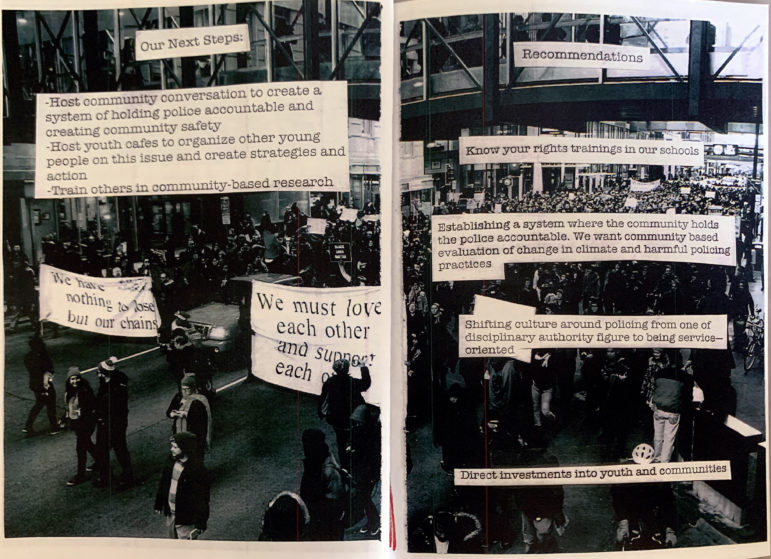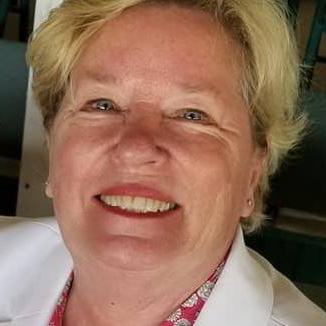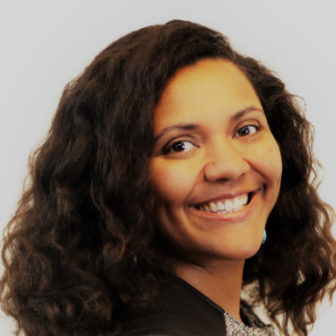
Courtesy of Youthprise
.
As protests erupt in cities across the nation following George Floyd’s death in police custody, youth-serving agencies appear to have a similar view of their role. Their job is to support young people, provide safe space for them and, in many cases, bring their voices and experiences into the public realm to solve public problems.
“The essential role of youth-serving organizations is to listen to and act in partnership with young people most impacted by the problems society creates for them,” said Wokie Weah, president of Youthprise, a Minneapolis grant-maker whose mission is to increase equity among Minnesota youth.
In recent years, Youthprise has supported young people’s research into police-community relations. The findings provide a context in which to understand the current protest.
The National Youth Leadership Council in St. Paul, Minn., responded on Thursday to the protests. CEO Amy Meuers sent out an email to other youth organizations to come together in a virtual meeting on Monday.
“Our school year ended with distance learning, our youth are isolated due to Covid-19, and now our communities are burning,” she wrote. “I do not pretend to have an answer but what I do know is that we must do something to support our young people so that their own lives do not end in violence.”
Meuers said youth organizations need to look to their strengths. “One of our strengths has been our ability to convene and bring people together,” she said.
At least one Minneapolis organization has been hurt by the violence that accompanied protests.
Migizi Communications, the more than 40-year-old nonprofit serving Native American youth, was among the buildings burned as flames swept from the Minneapolis 3rd Precinct police station on Thursday night. The organization’s digital archives were saved, but its recording studios and a trove of equipment in its newly renovated building were lost, Executive Director Kelly Drummer told Indian Country Today.
“It’s horrible,” Drummer said, “but we’ll rebuild. It’s all we can do. Stay strong for our youth.”
Migizi provides media arts training to more than 400 young people each year.
In Louisville, Ky., where seven people were shot Thursday by people in the crowd, the leader of YouthBuild Louisville said her agency’s role is to provide love and protected space. YouthBuild employs young people ages 18 to 24 in rehabbing housing and offers classes toward a high school diploma and job certifications.

Lynn Rippy
“There is absolutely a role for youth agencies to play at this time,” President and CEO Lynn Rippy said Friday.
In addition to creating a supportive space for youth, she said agencies should:
- Offer opportunities for them to express themselves, including fears.
- Validate their anger. Safe ways of expression include writing, talking, calling in the middle of the night, etc.
- Advise them of safe strategies if they’re taking part in demonstrations.
“We want them to let their voices be heard, to understand they have power,” Rippy said.
“They have been boxed out of that.”
Her advice about demonstrating is to go during daylight hours. Leave when the vibe changes, she said.
Most of the young adults at YouthBuild Louisville are black.
“This [current situation] isn’t a new context. Kids [already] feel disrespected and that their lives aren’t worth as much as others,” she said. It’s been going on for a very long time, she said.
Black people have taken so much stress and abuse in this country, she said. In addition, the COVID-19 pandemic has raised everyone’s anxiety.
“Kids are already on edge,” she said. Then the killings occurred. “It is so painful.”
The Louisville protests were in response to the mid-March killing of Breonna Taylor, 26, an emergency room technician who was shot as police broke into her apartment during the night on a “no-knock” warrant in a drug investigation. No drugs were found. The protests in Minneapolis after George Floyd’s death brought renewed focus to Taylor’s killing. The killing of Ahmaud Arbery in Brunswick, Ga., was also in the news.
The survey
In 2016 a group of young people at Youthprise did community research in their neighborhood of North Minneapolis.
They interviewed people about experiences with the police. They created a survey and got 173 responses, with nearly two-thirds of respondents under age 25 and the majority black.
Fifty-seven percent of respondents reported they were first stopped by police around age 14; 39% between ages 15 and 20.
More than two-thirds said they intentionally avoid the police by avoiding certain places, by staying home, by not traveling alone and by taking a longer route to places.
“I will never call 911. For what? Never, ever in my life,” responded one 16-year-old girl, according to the research team.
“Well I try to stay clear of the police because I’m not trying to die yet,” responded a young man,19, according to the team.
The Youthprise team made four recommendations relating to policing:
- Hold know-your-rights trainings in schools.
- Establish a system where the community holds police accountable. Set up community-based evaluation of changes in climate and harmful police practices.
- Shift the culture of policing from one of being disciplinary authority figures to being service-oriented.
- Make direct investments in youth and communities.
This group of youth were creating solutions to disrupt systems of inequity, Weah wrote.
She sees the current moment as a call to action. It’s time to “shift how we define and solve problems in partnership with youth,“ she wrote.
Issues aren’t new

Lynnea Atlas-Ingebretson
In Minneapolis, protests began with peaceful sit-ins and demonstrations earlier this week in front of the houses of the police officers involved in Floyd’s death and of the county attorney, said Lynnea Atlas-Ingebretson, Youthprise advancement and communications officer.
It was not a youth protest because people of many ages were taking part and the majority of the protestors were white, reflecting the population, she said.
On Thursday night, a protest turned violent, and the National Guard were called out. People began to come from out of state to join the demonstrations.
“In this situation, we don’t know who is out on the streets taking part in different types of protests,” Atlas-Ingebretson said. “It’s not a safe situation but it’s the situation we’re in now.”
Today, Minnesota Gov. Tim Walz said he suspected that white supremacist groups were adding to the chaos.
Since the COVID-19 pandemic began, youth organizations have not been operating as usual.
“It’s a time when youth organizations have not been able to engage with the youth for two to three months. … It’s not a normal context for us,” Atlas-Ingebretson said.
But the issues underlying the protest are not new, she said.
“In Minnesota, youth, and youth serving organizations are experiencing some of the worst disparities in the nation and the deepest pain of police brutality,” Youthprise President Weah said in an email.





























